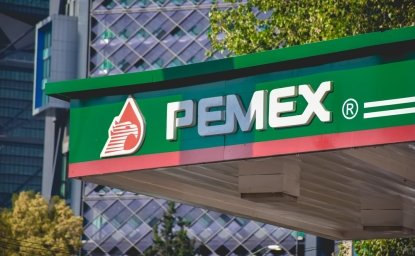Authors: Rick Tallman, Daniel Cardenas, and Morgan Bazilian
Martin Scorsese’s new film, “Killers of the Flower Moon” brings David Grann’s award-winning book to a wide audience. The story depicts the murders of tens of Osage people in Oklahoma after the discovery of oil—a brutal attempt to limit the amount of wealth given to the Native Americans.
As the energy transition plays out across the United States, tribal communities see both a tremendous opportunity and a direct threat to their sovereignty. The immense natural resources of tribal lands will almost certainly be needed to help secure the future of American energy security. At the same time, a history of energy exploitation has left reservation communities with systemic problems and unmet needs that energy policy makers, regulators and industry leaders must acknowledge, understand, and address in any go-forward plans.
Each Tribe’s energy strategy is driven first and foremost by the needs and priorities of their tribal citizens, especially those living on reservation land. Although community needs vary greatly between tribes and their reservation locations, they share a root of rampant poverty fueled by a pervasive lack of economic opportunity. These challenges are made more difficult by layers of government bureaucracy, including Federal, State, Local, and Tribal, that severely limit the impact of many tribal efforts.
Priority needs of Native American communities include a focus on economic development, education, and environment. Fighting generational poverty is the key. More than one in four Native Americans live in poverty, the highest rate of any group in the United States. The poverty rate is even higher for those who reside on reservations. Unemployment continues to drive much of daily life on reservations. Although the official unemployment rate among Native Americans is high (currently 8% - about twice the national average), unemployment among people living on reservations continues to hover around its historical 50% mark. Additionally, less than 50% of native homes are connected to a public sewer system and of those, 16% lack indoor plumbing and 14% lack electricity
Standing in stark contrast to the challenges reservation communities face is the opportunity to access the trillions of dollars of natural resources found on their sovereign lands. Unfortunately, structural political and regulatory barriers have made it difficult for tribes to take advantage of development opportunities, combined with the paternalistic policies of the Federal government towards tribes continue to make self-determination and tribal sovereignty an uphill battle in terms of resource development. The resource mix of each tribe is different, and greatly impacts their respective economic and political positions.
Oil and natural gas have long been associated with Tribal Lands. Indian reservations hold more than 35% of America’s fossil fuel resources. Energy Resource Tribes puts the total combined value of these fuels at $1.5 trillion. Although Native American reservations represent only 2% of US land, they hold 20% of the country’s oil and gas reserves. The Bakken shale formation continues to provide the Mandan, Hidatsa and Arikaara Nation in North Dakota billions of dollars of revenues, although major regulatory issues remain. Other tribes with major oil holdings include the Osage in Oklahoma, the Navaho (Dine’) in the Southwest and various Native corporations in Alaska. The Southern Ute Indian Tribe has some of the most sophisticated natural gas producing operations anywhere and operates with a philosophy of maximizing benefits to tribal membership from natural resource development while minimizing the impact on the natural and cultural environment. The Navajo-owned operation in the Aneth field in southern Utah brings in about $28 million to $35 million annually.
Native American lands are also home to large coal reserves, mines, and power plants. Navajo, Hopi, and Crow lands all have coal mines as well as remaining coal deposits. The Uintah, Ouray, Fort Berthold, Northern Cheyenne, and Zuni have coal reserves with potential for development. In 2019, coal-related operations ended abruptly for the Hopi tribe with the closure of the Navajo Generating Station (NGS) and the associated Kayenta Mine. This translated into over 1,000 jobs lost and an 85% reduction to the Tribe’s revenue. The Hopi are now working to reinvent their tribal economy away from coal, forming a diverse revenue base that includes renewable energy development.
It is hard to overstate the impact of uranium on the Native American community. From roughly 1950 to 1980, 928 nuclear tests took place on Shoshone territory, and 96% of all U.S. defense-related uranium mines were located in the Navajo Nation. Today, there are at least 523 abandoned uranium mines and four abandoned uranium mills on or near the Navajo Nation. The Lakota tribal territory hosts over 3,200 uranium mines, many of which await cleanup. With today’s urgent demand for large capacity clean power generation, anticipated future uranium demand is skyrocketing. Tribes find themselves faced again with balancing desperately needed new revenue streams with an unsettled history of resource exploitation and a lack of direct tribal economic prosperity linked to such development.
Solar energy is emerging as a key opportunity to many Tribes that do not hold natural resources on their land. The low cost to generate solar power coupled with high demand for clean energy across western states is driving tribal interest in solar energy. Federal support has been strong for solar projects on reservations. The DOE recently awarded $34 million to 18 different Native American energy projects. Fourteen were solar projects, primarily as a component of community microgrids. Recently, the Navajo Nation signed an MOU with the Department of Energy to facilitate funding for a solar-based clean energy transition. The Hopi Tribe were named as finalist for an EDA award and have received $1.2 million for solar infrastructure design and planning.
The Great Plains of the US are home to some of the best wind resource in the world. Material revenue opportunities and net energy independence are achievable for many tribes through utility-scale wind power. Several tribes are currently using wind power or developing new projects, including the Standing Rock Sioux and Spirit Lake Tribes, Cherokee Nation, and several Native Alaskan communities. A case study to consider is the Octet Sakowin Power Authority (OSPA), a coalition of 7 Sioux tribes created to develop the major wind capacity on tribal lands in South Dakota. Their first two projects total almost 2GW of capacity, and would have a massive positive impact on local tribal economies. Earlier this summer after 10 years of pre-construction work, OSPA and their development partner were hit with a $48-million security deposit in order to secure the projects’ place in the interconnection queue. The tribes, unable to make the deposit, have had to drop out of the queue, adding years to project schedules.
How can it be that our country’s most valuable natural resource portfolio is collectively owned by our poorest citizens? Without the basic authorities to enforce laws or levy taxes, hamstrung tribal governments are often forced to bargain for basic financial solvency at the expense of their cultural values. At least three things can help. First, Federal and state policy makers, regulators and industry leaders must seize the opportunity offered by the energy transition to achieve national energy security goals in partnership with tribal communities and with respect to their energy sovereignty and self-determination. Second, Tribes should be included early and often in meaningful discussions about permitting and revenue sharing, before outside development plans are finalized. Third, vastly increased funding for tribal energy development projects should be allocated by congress and the federal government, which minimize funding match requirements and direct competition amongst tribes.
If federal and state policy makers, industry, and academia can rise to meet these challenges, pursuit of the dual goals of energy security and tribal self-determination can support a new era of economic opportunity and prosperity for tribes and American energy independence.
Contributor

Director of the Payne Institute and Professor at the Colorado School of Mines

Wahba Institute for Strategic Competition
The Wahba Institute for Strategic Competition works to shape conversations and inspire meaningful action to strengthen technology, trade, infrastructure, and energy as part of American economic and global leadership that benefits the nation and the world. Read more

Explore More
Browse Insights & Analysis
La esencia de la infraestructura global: perspectivas del líder de la industria Matt Harris

Debunking the Patient Capital Myth: The Reality of China’s Resource-Backed Lending Practices


